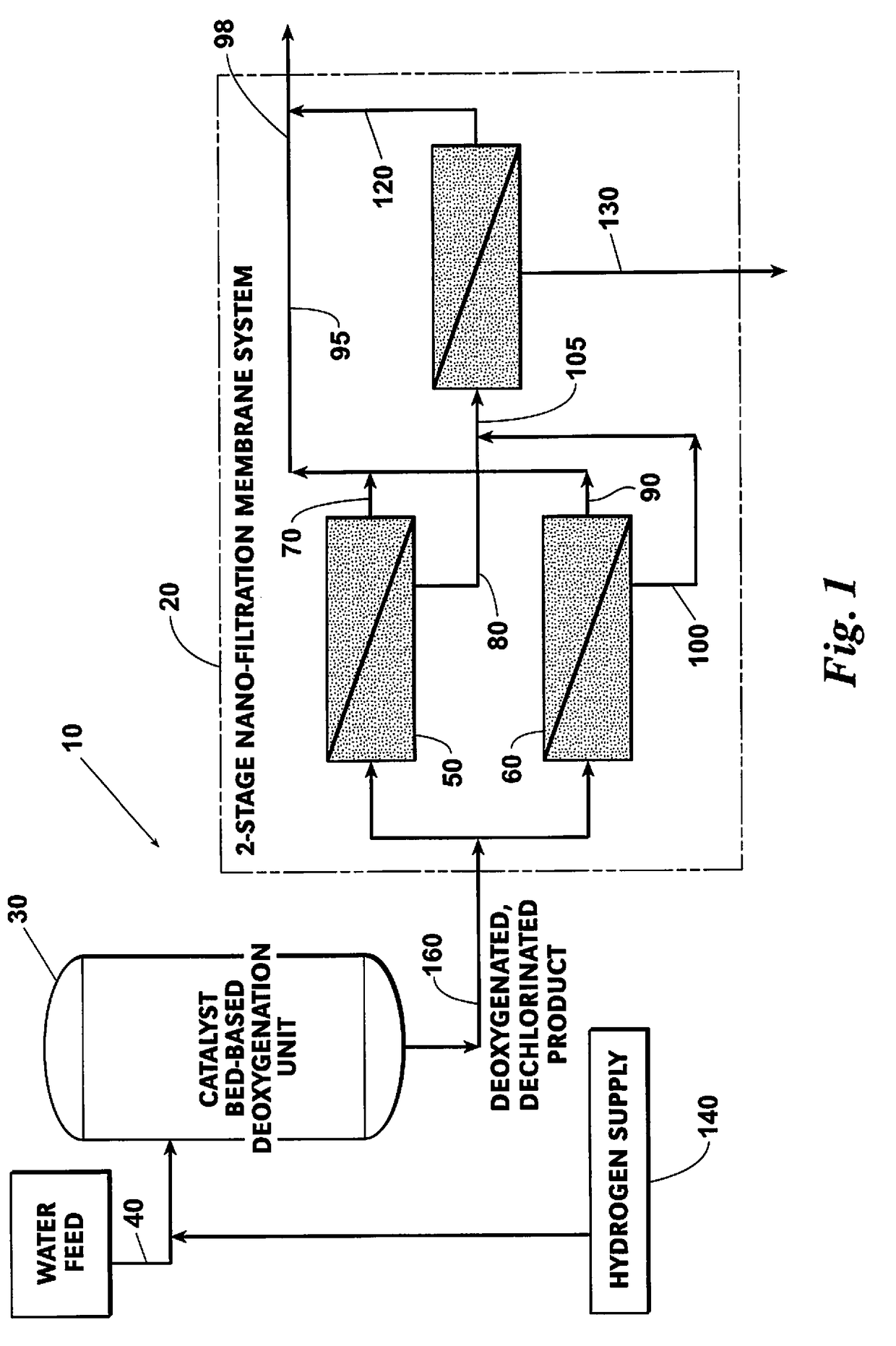System And Process To Protect Chlorine-Susceptible Water Treatment Membranes From Chlorine Damage Without The Use Of Chemical Scavengers
a chlorine-susceptible water treatment membrane and chlorine-free technology, applied in water/sewage treatment by degassing, quary waste water treatment, membranes, etc., can solve the problems of residual chorine damage to the membrane, inactive or ineffective membranes, etc., to simplify the dechlorination process, prolong the life and effectiveness of the membrane, and reduce the footprint and operating cost.
- Summary
- Abstract
- Description
- Claims
- Application Information
AI Technical Summary
Benefits of technology
Problems solved by technology
Method used
Image
Examples
Embodiment Construction
[0054]A system and process made according to this invention deoxygenates and dechlorinates a water feed dosed with, or containing, chlorine prior to the feed reaching chlorine-susceptible membrane technologies. The water feed is mixed with hydrogen (or hydrazine) and enters a catalytic bed-based deoxygenation unit. The hydrogen reacts with the oxygen and chlorine species present in the feed to produce a deoxygenated and dechlorinated water product. This water product then enters a filtration system having a nanofiltration or a reverse osmosis membrane system (or parallel arranged nanofiltration and reverse osmosis membrane systems). No chemical scavenging is required between the deoxygenation unit and the membrane systems.
[0055]Referring first to FIG. 1, a preferred embodiment of a system 10 includes catalyst bed-based deoxygenation unit 30 arranged upstream of a two-stage nanofiltration membrane system 20. The number of membrane units in the each stage may vary with the quantity an...
PUM
| Property | Measurement | Unit |
|---|---|---|
| size | aaaaa | aaaaa |
| size | aaaaa | aaaaa |
| chemical | aaaaa | aaaaa |
Abstract
Description
Claims
Application Information
 Login to View More
Login to View More - R&D
- Intellectual Property
- Life Sciences
- Materials
- Tech Scout
- Unparalleled Data Quality
- Higher Quality Content
- 60% Fewer Hallucinations
Browse by: Latest US Patents, China's latest patents, Technical Efficacy Thesaurus, Application Domain, Technology Topic, Popular Technical Reports.
© 2025 PatSnap. All rights reserved.Legal|Privacy policy|Modern Slavery Act Transparency Statement|Sitemap|About US| Contact US: help@patsnap.com



